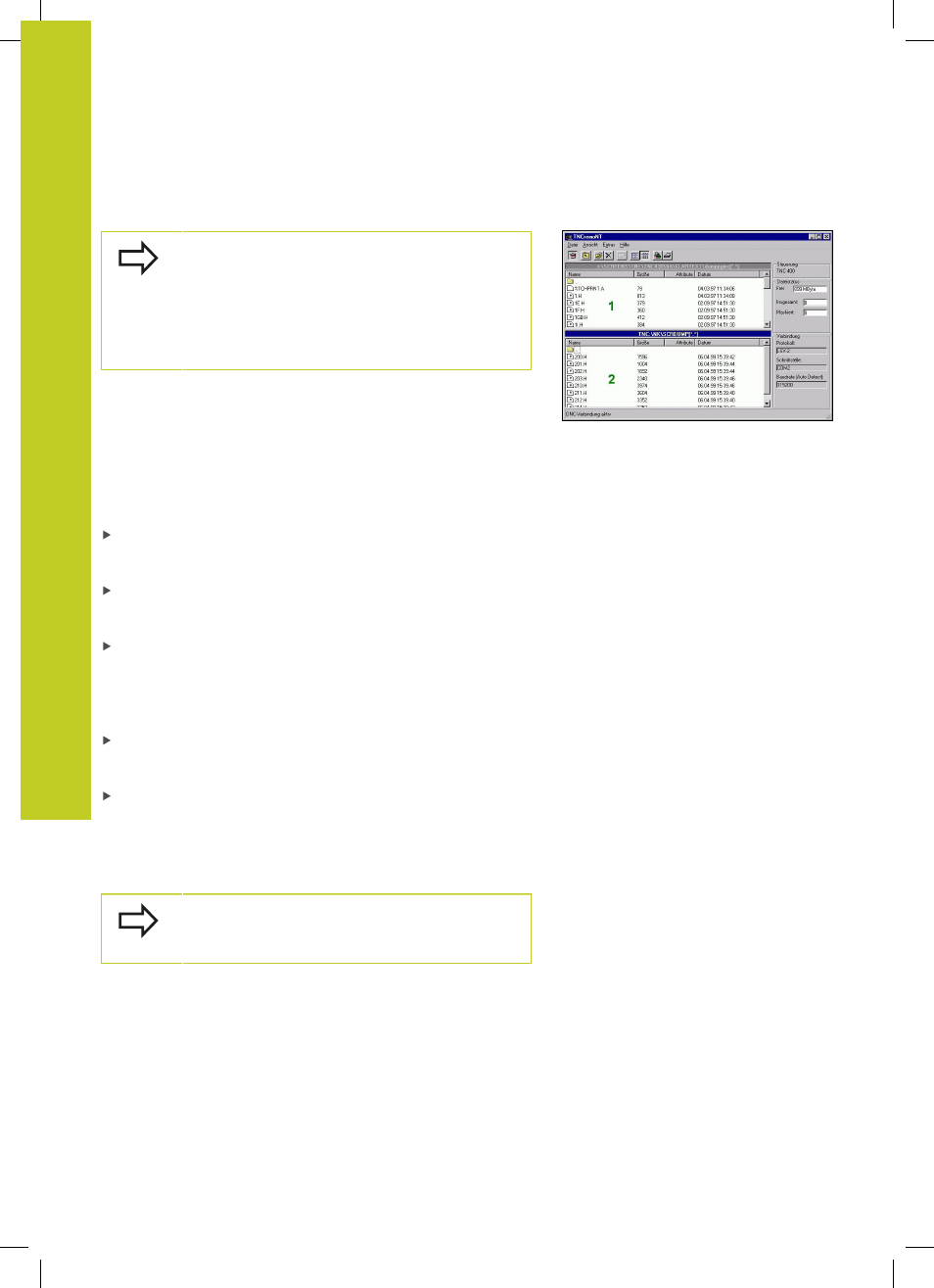Mod functions 14.10 setting up data interfaces – HEIDENHAIN TNC 128 (77184x-02) User Manual
Page 360

MOD functions
14.10 Setting up data interfaces
14
360
TNC 128 | User's Manual HEIDENHAIN Conversational Programming | 5/2014
Data transfer between the TNC and TNCremo
Before you transfer a program from the TNC to the
PC, you must make absolutely sure that you have
already saved the program currently selected on the
TNC. The TNC saves changes automatically when
you switch the mode of operation on the TNC, or
when you select the file manager via the PGM MGT
key.
Check whether the TNC is connected to the correct serial port on
your PC or to the network.
Once you have started TNCremo, you will see a list of all files that
are stored in the active directory in the upper section of the main
window
1
. Using
drive or another directory on your PC.
If you want to control data transfer from the PC, establish the
connection with your PC in the following manner:
Select
file and directory structure from the TNC and displays this at the
bottom left of the main window
2
To transfer a file from the TNC to the PC, select the file in
the TNC window with a mouse click and drag and drop the
highlighted file into the PC window
1
To transfer a file from the PC to the TNC, select the file in
the PC window with a mouse click and drag and drop the
highlighted file into the TNC window
2
If you want to control data transfer from the TNC, establish the
connection with your PC in the following manner:
Select
mode. It can receive data from the TNC and send data to the
TNC
On the TNC, select the functions for file management using
the
PGM MGT keysee "Data transfer to/from an external data
medium", page 116 and transfer the desired files
End TNCremo
Select
Refer also to the TNCremo context-sensitive help
texts where all of the functions are explained in more
detail. The help texts must be called with the F1 key.
